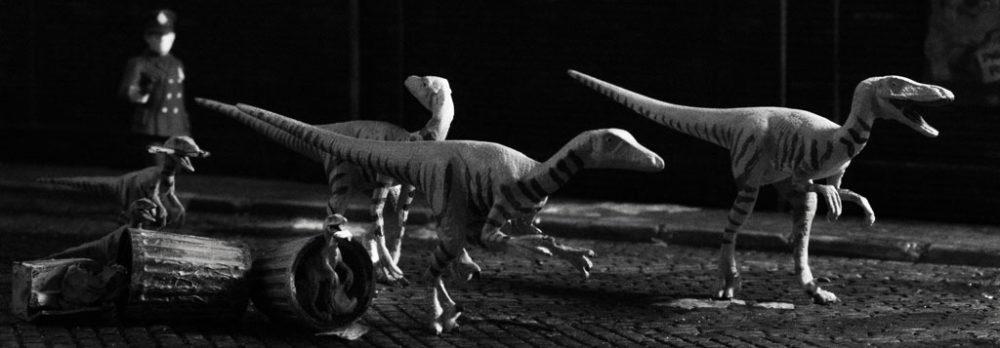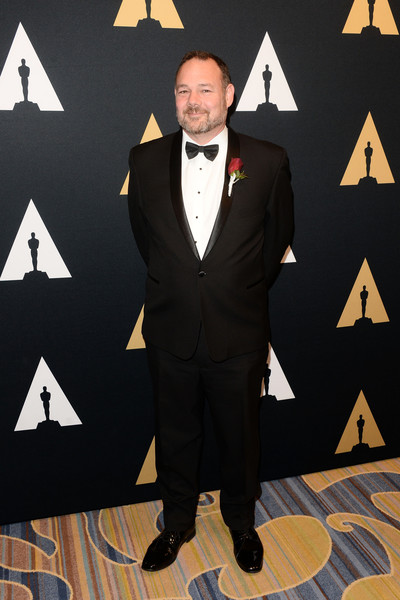The early years
An odd place to start, but important.
I got started using tools when I was old enough to hold them. The soldering iron, electric drill, knife and jigsaw were at my disposal when I was 4. Lego was a rainy day activity; the rest of the time I was making real stuff with real materials and real tools.
My father had a model train store where I spent a lot of time as a kid. I made a lot of stuff there, and when I was making things I got a lot of instruction and feedback from special effects designers, Walt Disney Imagineers and people like Caleb Chung (inventor of the Furby and Pleo toys.)
I started working full time when I was 13. I got a job at a motion picture crane company where I did electronic and mechanical design, as well as machining the components for the products they were prototyping.
By the time I was 16, I had an increasingly large arsenal of stuff. Analog synthesizers, wire wrapped 6502 computers, plotters, lasers and a holography lab. I was programming in 6502 binary, assembly and machine language, BASIC, C, Modulo, Pascal, LISP and FORTH.
I worked in various fields, camera support, special effects, laser entertainment, model building, motion control and film production. I got to see how people worked, especially in the entertainment industry, which is ultra-fast paced by necessity.
Clairmont Camera
I started at Clairmont Camera as a lens technician. My aptitude for electronics and mechanical design quickly led to a promotion to the engineering department. There I worked on the development of several important products, as well as innovating some on my own.
Swing and Shift lenses
I helped with the evolution of the system, designing new lens re-housings including iris reworking to linearize the iris ring on some of them.
Blink Filters
A series of distorting filters. Each hand made with different effects and focal lengths in mind.
Vistuousity Color Wheel
A motorized color filter system that runs in synch with the film camera to expose each frame with a separate color filter.
Squishy Lens
The Emmy award winning and Academy award nominated Squishy Lens was a device entirely conceived and developed by myself. A silicone rubber lens element compressed between two plates of polycarbonate with tilt and compression control. This is one of the things I am most proud of at Clairmont. Software, electronics, mechanics, material science, and system design to make a product that produces a pleasing effect, on set, and continues to be rented 20 years later. The Squishy Lens was used to set the tone of the motion picture Minority Report and has seen extensive use in films and television such as X-Men and Star Trek Voyager.
Image Shaker
The Emmy and Academy award winning image shaker is another device conceived and developed entirely by myself. A variable angle wedge prism composed of two pieces of glass and an optical fluid contained between them. An intentionally open loop control leads to more organic motion. This product is a highly viable product some 20 years later, and is used extensively in films such as Saving Private Ryan, the Bourne series, the Pirates of the Caribbean as well as countless television appearances from soap operas to commercials.
Metrology
I built a lot of metrology devices including a projection reticle that is used by Cooke in their new lens test equipment.
Panavision
At Panavision I was the west coast special projects enabler. I reported to the CTO directly, and worked on a variety of projects, either as engineer glue, serving to bind engineers of different disciplines together, or as a single point developer of systems, solutions and devices.
Academy Award winning Hylen System
I was responsible the system architecture and the mechanical design of this device. Internally a 3-axis, highly constrained motion control system moved an interchangeable optical cartridge. Originally proposed as a single effect device, I facilitated the notion that it could have interchangeable cartridges.
300x Super Zoom
I developed the internal metadata scheme, stabilization scheme, and motion and orientation sensing scheme of Panavision’s 300:1 continuous zoom.
SmartLens Technology
I developed the internal metadata scheme for all digital cinema primes and zooms, leading to a homogenous, accurate and reliable sensing technology.
Primo Digital Lenses
I Designed the aesthetics of the Primo Digital lenses, implemented on the 5mm and carried on through the line of 6 primes and 4 zooms.
Motion Control Frazier
I took on the original mechanical design and redesigned about 75% of the mechanics to provide internal motion control components. I also designed the overall system architecture, including separate hypervisor systems.
Back-pan Plus
I developed a vastly improved architecture to the Back-pan system. Rather than implementing this product as a standard motion control device, I developed a differential, velocity based modality that acted as a precise assistance layer that could be dialed in and out to vary the amount of assistance provided to the operator. This provided a better workflow, saved time on set, while not replacing humans with computers.
Streamlining Production
Various testing and production tools, including a set of software and data gathering tools that reduced specific lens manufacturing iterations from a week to less than a day, literally taking a month off the manufacturing time of some of their zoom lenses.
Applied Minds
At Applied Minds, I hold the title of Director of Electro-Optics, but in reality I bring a lot of interesting skills to the table.
Reactivity and Sensitivity
Tracking the ebb and flow of a project, knowing when to ditch a concept and when to soldier on. I can take on, and hand off project responsibilities in an instant as need demands, providing project management, technical leadership, or any lower level detail without skipping a beat. I can work on multiple projects in a day or spend several years on a single one.
Balance
Knowing when to engineer and when to make is crucial. An engineer can get mired in the details and a maker can be ignorant of tools, techniques and the fine details that can derail a project. Balancing proactive and reactive methods with tools and materials appropriate to the task at hand is crucial. I have broad experience here and use this knowledge to guide myself and others.
Coarse and Fine
I scale my design and required manufacturing according to the needs of the project. I take best advantage of the tools at hand, whether they are a laser cutter, 3d printer, waterjet cutter, mill, lathe, wire EDM, whatever the project needs demand.
Heart of the Matter
What is the real problem, what are we really trying to accomplish? Stepping aside and avoiding “engineer-lock” and tunnel vision are now second nature to me.
Miniature Work
I spent two years working on micro optics and miniature optical systems. Vacuum assist tooling, 3D microscopes, custom tooling and curing fixtures. This series of projects was a highly technical and highly incremental, starting with rough prototypes and ending with micro-machined metal work and ultra-miniature optics Proving concepts at a low risk, low level of detail and advancing as concepts proved out.
The Boundary Layer
When software and hardware meet, physics kicks in. Understanding what can and can’t, and what should and shouldn’t be done in hardware and software is something I have a lot of experience in.
Project Leadership
I can run the fiscal and or technical aspects of a project. Delivering on time, on budget, while managing internal and external client expectations. I can manage feature creep, code bloat and human resources. I have handled teams of up to 20 people, across multiple work sites, in ultra fast paced settings.
Hit the Ground Running
I have participated in several remote, rapid prototypes events where I have come in, surveyed the “landscape,” identified client deficiencies and capabilities and adjusted accordingly. During these events I was brought on for cameras and optics, but invariably provide technical team leadership.
Digital imaging
I have broad experience in the field of digital imaging, with a focus (pun intended) on multi-aperture systems, multi-spectral imaging, night vision systems and ultra-high resolution systems. Generally, I build a camera with the intent of spending the least amount of resource on its construction, preferring to get a stable,usable platform into the hands of software engineers to prove concepts as fast as possible.
Patents, patent applications and IP
I hold Patents in the field of motion control, user interface, and night vision optics.
https://patents.justia.com/patent/9239619
https://patents.justia.com/patent/9503623
https://patents.justia.com/patent/9743860
https://patents.justia.com/patent/9772719
https://patents.justia.com/patent/9494844
https://patents.justia.com/patent/7101045
Cameras
Regardless of what I am distracted by at the time, photography and image creation have been a current throughout my life. I got my first camera, a Kodak Brownie, over 40 years ago, and I have been making images ever since. I won’t enumerate all the cameras I have, but I favor medium format and mirrorless digital.
I am not a camera snob, and I believe the best camera is the one you have, but I would like people to know the difference between taking a photo and making a photo. I do believe that a camera is a very fetishistic thing. A good looking camera inspires, a camera with “good hand” enables, and a camera with an easy menu structure enables you.
A favorite camera project was the Trash Cam, a large format camera lens housed in a trash can. I needed a large and inexpensive vessel that was light tight, and the trash can fit the bill. The image plane is mounted to a drawer slide and a bungee cord provides a pre-load. A piece of rope and a pulley attached to the lid provide focus control with the rotation of the lid.
One of my current camera projects is an edible (or at least non toxic,) camera. I have successfully built gelatin lenses, and I am pretty sure I can make a body with Transglutaminase and ground meat. The emulsion… algae in an agar suspension, or perhaps chlorophyll prints.
Another recent project was the seagull camera. I had a particular shot in mind and quickly built a rig to get the shot.

